The intricate interplay between a dog's anatomy and the development of luxating patella unveils a compelling narrative of orthopedic challenges faced by our four-legged companions.
As signs of discomfort manifest and treatment options come to the forefront, a nuanced understanding of this condition becomes pivotal for informed decision-making.
From conservative management strategies to the potential financial considerations entailed in surgical interventions, exploring the multifaceted dimensions of luxating patella in dogs offers a glimpse into the complexities of canine orthopedic care, shedding light on the path towards enhanced well-being for our beloved pets.
Key Takeaways
- Luxating patella signs include stride changes and leg holding.
- Treatment involves surgery for grades 3 and 4.
- Post-operative care is vital for successful recovery.
- Costs vary based on severity and may include rehabilitation.
Understanding Luxating Patella in Dogs
An in-depth comprehension of luxating patella in dogs is essential for pet owners to recognize and address this orthopedic condition promptly.
Luxating patella, commonly known as a dislocated kneecap, occurs when the patella moves out of its normal position within the thigh bone groove. This displacement can lead to discomfort, altered gait, and lameness in affected dogs.
While the condition is often diagnosed in puppies, it can also manifest in adult dogs due to genetic predispositions or trauma. Breeds such as Boston terriers, Chihuahuas, Pomeranians, and Yorkshire terriers are particularly prone to luxating patella.
Understanding the signs, progression, and treatment options for this condition is crucial for ensuring the well-being and mobility of our canine companions.
Recognizing Signs of Luxating Patella
Understanding the subtle signs of luxating patella in dogs is crucial for pet owners to promptly identify potential discomfort or mobility issues in their canine companions. Signs of luxating patella may include a change in stride, hopping while walking, holding a leg up, or stretching it out behind. Observing these behaviors, especially in toy breeds like Boston terriers, Chihuahuas, Pomeranians, and Yorkshire terriers, can indicate a possible issue with the kneecap.
Additionally, if you notice your dog avoiding putting weight on a particular leg or showing signs of discomfort when walking or running, it's essential to consult a veterinarian for a proper diagnosis and treatment plan. Being vigilant and recognizing these signs early can help in managing luxating patella effectively.
Diagnosing Luxating Patella in Dogs
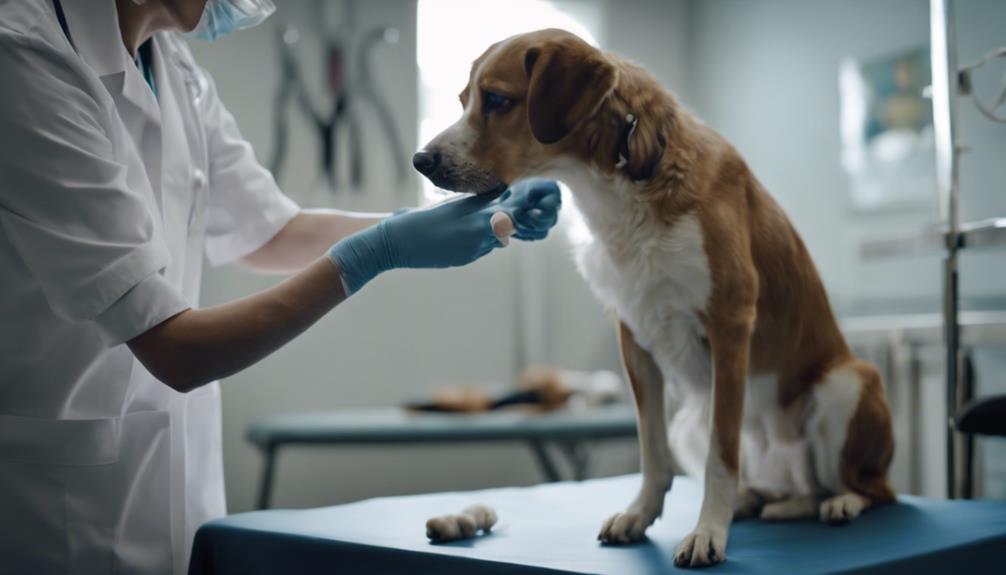
When diagnosing luxating patella in dogs, veterinarians typically assess the condition through a combination of physical examination and diagnostic imaging techniques. During the physical examination, the vet will manipulate the dog's affected limb to check for the patella's movement and grade its severity on a scale of 1 to 4.
Diagnostic imaging techniques such as X-rays can provide a clearer view of the knee joint, revealing any abnormalities in the bone structure or alignment. These imaging tests help confirm the diagnosis and determine the best course of treatment for the luxating patella.
Early and accurate diagnosis is essential for developing an effective treatment plan to alleviate discomfort and improve the dog's quality of life.
Common Breeds Affected by Luxating Patella
In evaluating the impact of luxating patella in dogs, it is essential to recognize the prevalent breeds commonly affected by this orthopedic condition. Toy breeds like Boston terriers, Chihuahuas, Pomeranians, and Yorkshire terriers are particularly susceptible to luxating patella due to developmental issues such as tight soft tissues, shallow thigh bone grooves, and misaligned tendons.
| Common Breeds Affected by Luxating Patella | ||
|---|---|---|
| Boston Terriers | Chihuahuas | Pomeranians |
| Yorkshire Terriers |
Surgical Treatment for Luxating Patella
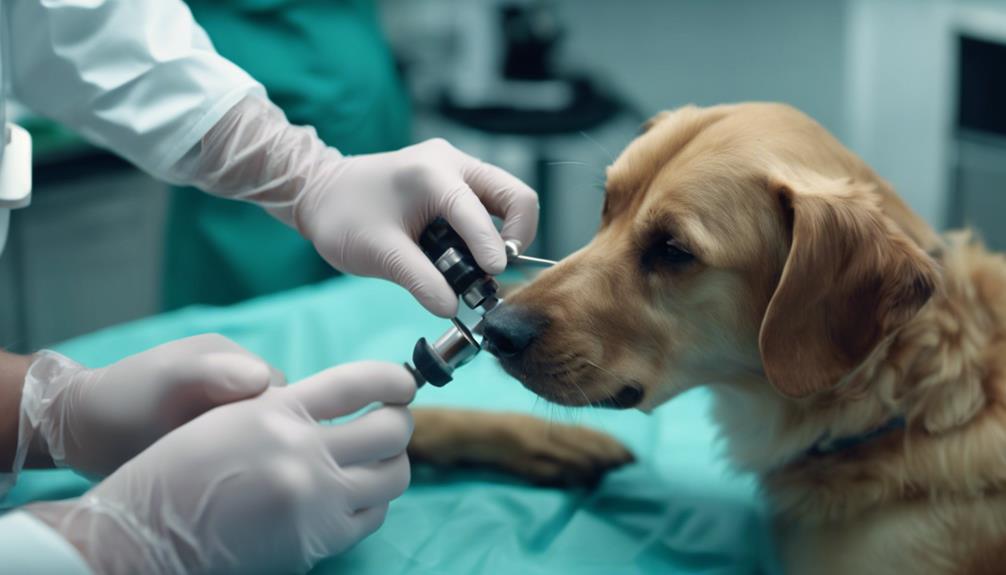
For dogs with luxating patella, surgical treatment is often recommended to address the condition effectively. Surgery is typically recommended for grades 3 and 4 luxating patellas, where the kneecap dislocates frequently or permanently.
Surgical techniques may involve deepening the groove in the thigh bone to better hold the kneecap in place or repositioning the tendon to correct alignment issues. The goal of surgery is to stabilize the kneecap and prevent further dislocations, ultimately improving the dog's mobility and quality of life.
It is essential for pet owners to consult with a veterinarian experienced in orthopedic surgery to determine the most appropriate surgical approach based on the severity of the luxating patella.
Non-Surgical Management of Luxating Patella
Surgical treatment is commonly recommended for dogs with grades 3 and 4 luxating patellas, aiming to improve stability and mobility; however, for cases where surgery may not be feasible or preferred, non-surgical management strategies can be employed.
Non-surgical options for managing luxating patella in dogs include weight management to reduce stress on the joints, physical therapy to strengthen supporting muscles, joint supplements like glucosamine and chondroitin to promote joint health, and anti-inflammatory medications to alleviate discomfort.
Additionally, modifying exercise routines to lower impact activities, using orthopedic braces or wraps for added support, and providing a soft and comfortable resting area can aid in managing the condition without surgery.
Regular veterinary consultations are essential to monitor progress and adjust the management plan as needed.
Health Concerns and Warning Signs
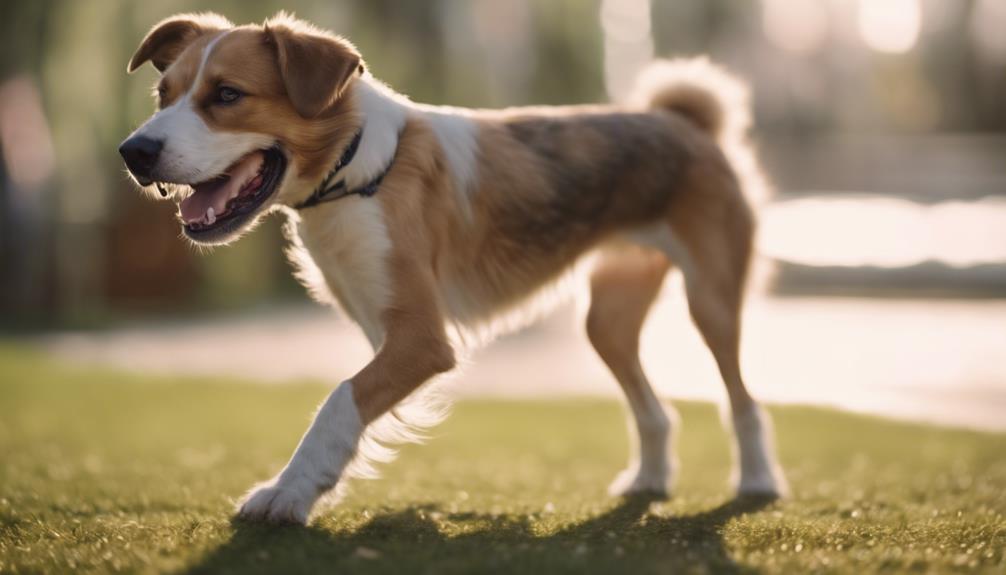
Health concerns and warning signs are crucial aspects to monitor for the well-being of your canine companion. It's important to be vigilant for any changes in behavior or physical symptoms that could indicate underlying health issues. Warning signs such as loss of appetite, lethargy, unexplained weight loss, and difficulty breathing should not be ignored and warrant prompt veterinary attention. Early detection of these signs can lead to timely intervention and improved outcomes for your dog's health.
| Warning Signs | Description | Action Required |
|---|---|---|
| Changes in behavior | Any unusual behavior patterns | Monitor closely |
| Loss of appetite | Decreased interest in food | Consult a veterinarian |
| Lethargy | Lack of energy or enthusiasm | Seek veterinary advice |
| Unexplained weight loss | Sudden decrease in weight | Visit a veterinarian |
| Difficulty breathing | Labored breathing or panting | Immediate veterinary care |
Coping With Pet Cancer Diagnosis
Coping with a pet cancer diagnosis can be a challenging and emotional journey for both you and your beloved companion. Upon receiving such news, seeking support from a veterinarian experienced in oncology is crucial. Your vet can provide information about treatment options, potential outcomes, and support resources available. It's essential to follow the treatment plan diligently, administer medications as prescribed, and monitor your pet for any side effects.
Maintaining a routine can offer comfort and stability during this uncertain time. Quality time spent with your furry friend, engaging in activities they enjoy, can help strengthen your bond and provide comfort. Remember to take care of yourself too, seeking emotional support when needed to navigate this difficult period.
Preventing Heat Exhaustion in Dogs
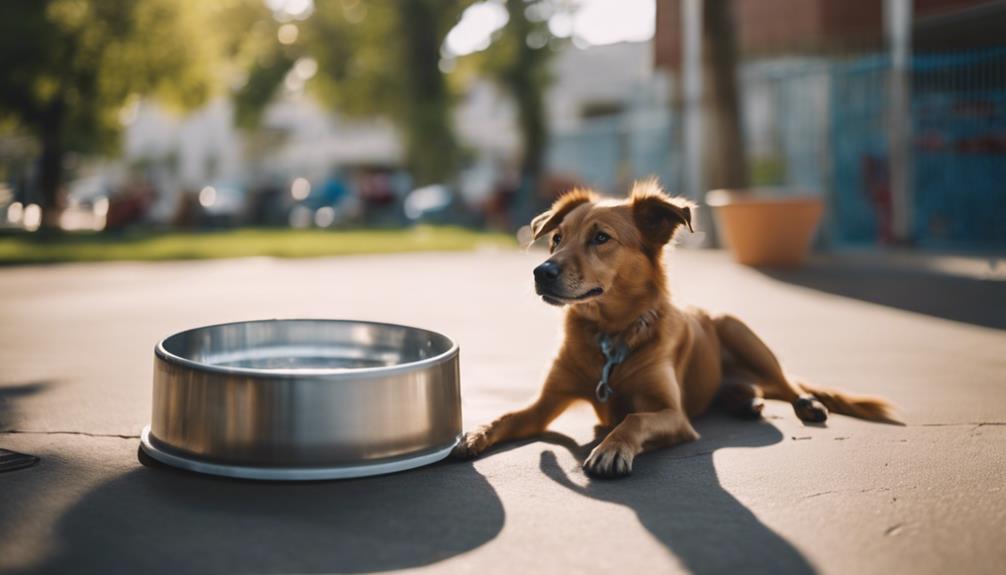
To safeguard your canine companion from heat exhaustion, it is imperative to implement preventative measures that prioritize their well-being during warmer weather conditions. Dogs are particularly susceptible to heat-related illnesses due to their limited ability to cool down efficiently.
When temperatures rise, ensure your dog has access to shade and an adequate water supply at all times. Avoid exercising them during the hottest parts of the day and never leave them unattended in a hot car.
Recognize signs of heatstroke such as excessive panting, drooling, or lethargy, and seek immediate veterinary care if you suspect heat exhaustion. By taking these precautions and being vigilant, you can help prevent heat-related issues and keep your furry friend safe during the heat.
Maintaining Optimal Eyesight in Dogs
As we focus on the importance of maintaining optimal eyesight in dogs, it is crucial to understand the significance of regular veterinary check-ups and a balanced diet rich in essential nutrients. Ensuring your furry companion's vision remains sharp can significantly enhance their quality of life and overall well-being.
To evoke emotion in the audience, consider the following:
- Regular eye examinations can detect issues early, preventing unnecessary suffering.
- Providing a diet rich in vitamins A, C, and E can help support and protect your dog's eyesight.
- Protecting your dog's eyes from harmful UV rays by limiting exposure to sunlight and using protective gear can safeguard their vision for years to come.
Rehabilitation After Luxating Patella Surgery
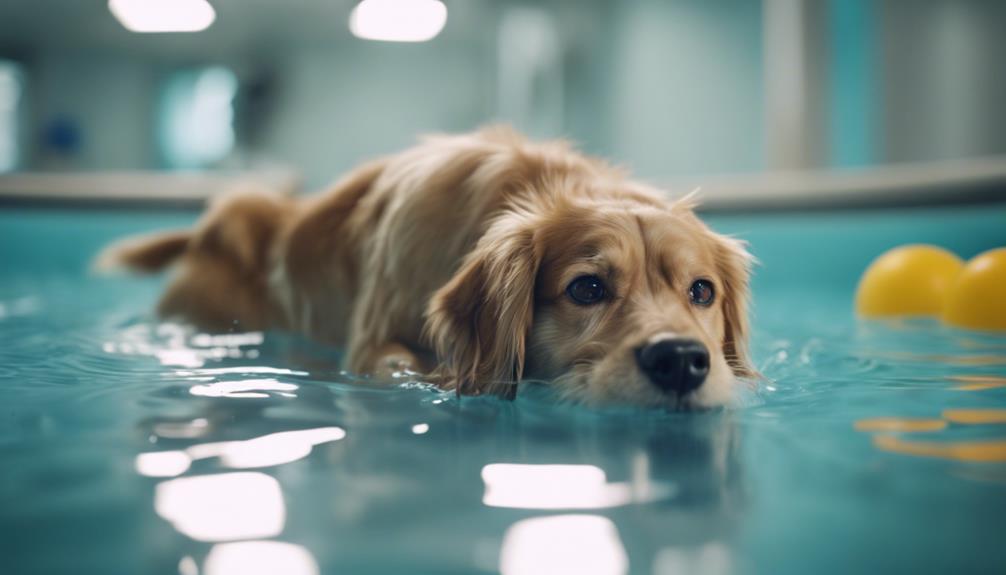
Rehabilitation following surgery for luxating patella in dogs is a critical component of their post-operative care regimen. After surgery, strict confinement is typically advised to allow for proper healing.
Controlled exercises, such as short leash walks, are gradually introduced to rebuild strength and mobility. Rehabilitation therapy, including exercises to improve muscle tone and joint flexibility, plays a key role in restoring the affected limb's function.
Additionally, follow-up vet visits are essential to monitor progress and address any concerns promptly. This comprehensive approach to rehabilitation aims to ensure a successful recovery and improve the dog's quality of life post-surgery.
Owners should adhere closely to the rehabilitation plan outlined by their veterinarian to optimize their pet's recovery outcomes.
Understanding Dog ACL Surgery Costs
Following successful surgery for luxating patella in dogs, owners should be aware of the financial considerations associated with dog ACL surgery costs. The costs can vary based on several factors, including the location of the surgery and the severity of the condition. Additionally, pre-surgery diagnostics can add to the overall expenses, and post-surgery rehabilitation may be necessary for a complete recovery. To help manage these costs and ensure the best care for your furry companion, pet insurance can be a valuable resource. Understanding the financial aspects of dog ACL surgery is essential for pet owners to make informed decisions and provide the necessary support for their beloved pets.
- Financial burden can cause stress and anxiety for pet owners.
- Pet insurance offers financial assistance and peace of mind.
- Proper budgeting and planning can help alleviate the financial strain.
Breeds Susceptible to Luxating Patella
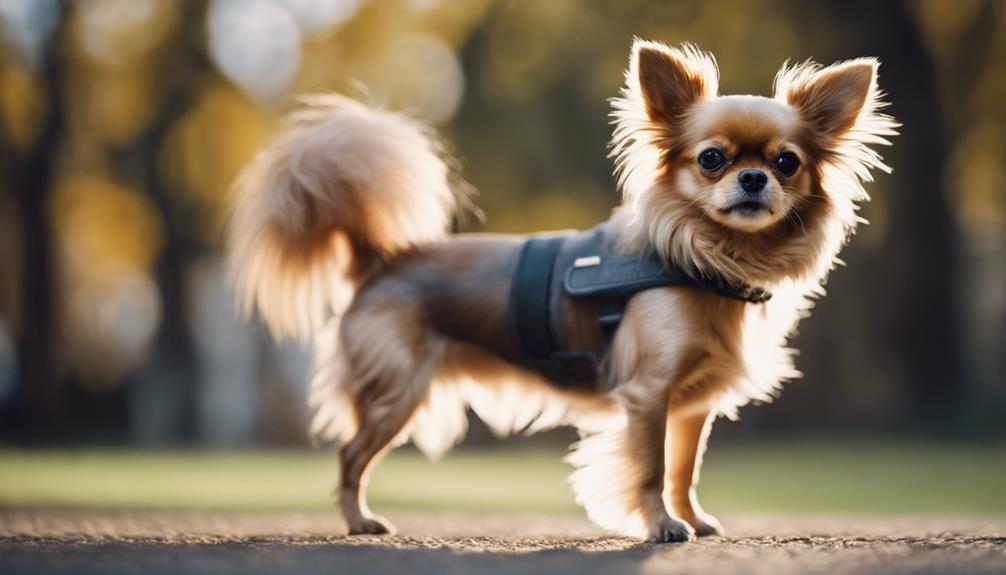
Certain dog breeds, particularly toy breeds like Boston terriers and Chihuahuas, as well as Pomeranians and Yorkshire terriers, are notably susceptible to developing luxating patella. This condition is more prevalent in these breeds due to factors such as their small size and genetic predisposition to orthopedic issues. Below is a table highlighting some of the dog breeds commonly affected by luxating patella:
| Breed | Susceptibility Level |
|---|---|
| Boston Terrier | High |
| Chihuahua | High |
| Pomeranian | Moderate |
| Yorkshire Terrier | Moderate |
| Great Dane | Low |
This table provides a visual representation of the varying degrees of susceptibility to luxating patella among different dog breeds.
Developmental Issues in Luxating Patella
Developmental issues play a significant role in the occurrence of luxating patella in dogs, particularly contributing factors such as tight soft tissues, a shallow thigh bone groove, and misaligned tendons. These developmental issues can lead to increased stress on the kneecap, resulting in its dislocation. Understanding these factors is crucial in managing the condition effectively.
To evoke emotion in the audience, consider the following:
- Imagine the discomfort and pain your furry friend experiences with each dislocation.
- Picture the frustration of not being able to run and play freely due to this condition.
- Think about the relief and joy that successful treatment can bring to both you and your beloved pet.
General Care and Exercise Recommendations
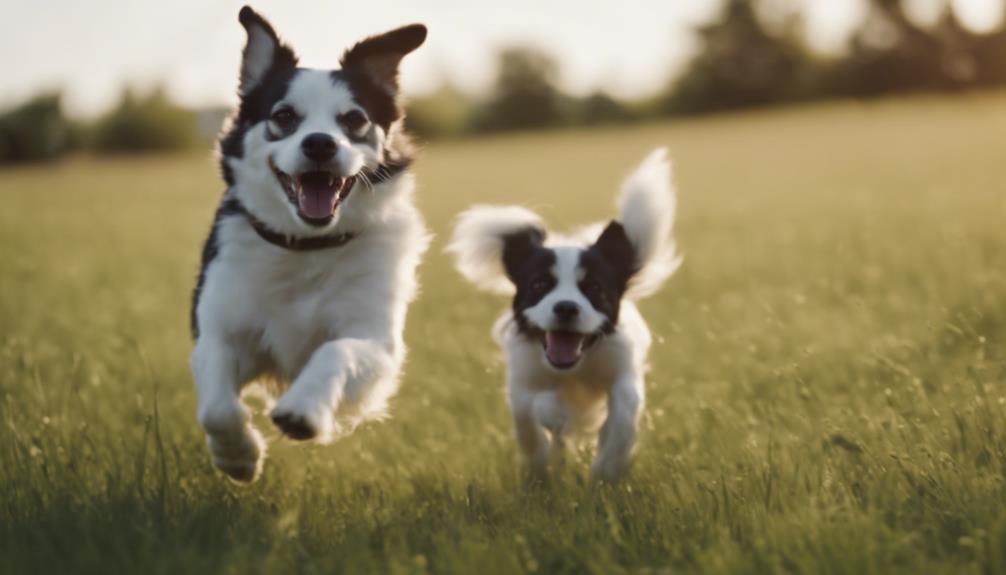
To ensure the well-being of dogs with luxating patella, implementing appropriate care and exercise routines is essential. While dogs with this condition may require special attention, they can still benefit from gentle walks to maintain muscle strength and joint flexibility.
Additionally, underwater treadmill therapy can be a valuable tool in their exercise regimen, providing low-impact cardiovascular activity. Regular walks and exercises not only contribute to their overall health but also help manage weight, reducing the strain on their joints.
Alongside exercise, maintaining optimal eyesight through regular vet check-ups, a balanced diet, UV protection, cataract monitoring, and vet-recommended supplements is crucial. Preventing heat exhaustion by avoiding hot weather exercise, providing ample shade and water, and recognizing signs of heatstroke are also vital components of their care routine.
Conclusion
In conclusion, luxating patella in dogs presents as a common orthopedic concern requiring prompt recognition and appropriate intervention. From diagnosing the condition to considering surgical options, the complexities of managing luxating patella underscore the importance of tailored care plans.
Understanding the financial implications of postoperative care further emphasizes the multifaceted nature of addressing this condition. By prioritizing proper care and rehabilitation, we can promote optimal well-being for our canine companions affected by luxating patella.




